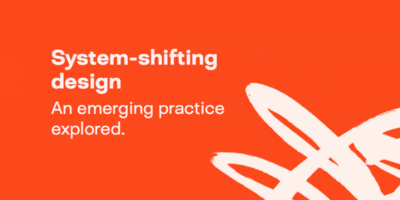Sheffield Hallam University

Design coaching helped Sheffield Hallam University to develop a novel solution for safer breast radiotherapy, increasing accuracy and improving the feeling of comfort and dignity for women during treatment.
Breast cancer affects a substantial proportion of the population. State-of-the-art radiotherapy approaches require increasing levels of precision accuracy to avoid long term side effects. However, the methods for positioning and immobilising the breast are inadequate, especially given the increased complexity of the radiotherapy approaches used.
Sheffield Hallam University set out to develop a novel solution for safer breast radiotherapy and developed a support bra for use in treatment. Aside from enabling the precision required, the aim of the bra was to improve the feeling of dignity and comfort during treatment for women.
The university’s Technology Transfer Team had already identified service providers such as the NHS and private companies providing radiotherapy as possible customers, and the hope was that the bra would be adopted into normal clinical practice in radiotherapy departments.
Our hope was that [Design Council] would enable us to move forward through a successful application for next-stage funding.
Heidi Probst, Sheffield Hallam University
To begin with, an industrial designer from the faculty of Arts, Computing, Engineering Science was brought in and some initial concepts were produced and preliminary testing undertaken. But the team was yet to clarify how the support bra would be manufactured and what its routes to market would be – two key elements that needed clarification to secure additional funding for further development, including a trial to prove why it was indeed superior to existing methods.
Uncertain how best to move forward and ensure further development would fit into the NHS organisationally and financially, the university enrolled on Design Council’s research commercialisation programme and began working with Design Associate, David Raffo.
“We had already done a lot of preliminary work so I was unsure what additional support Design Council could provide,” said Heidi Probst, lead researcher on the project and Professor of Radiotherapy and Oncology at the university’s Faculty of Health and Wellbeing. “Our hope was that it would enable us to move forward through a successful application for next-stage funding.”
What we did
My role was to support the team with business, design process and manufacturing knowledge.
David Raffo, Design Council Design Associate
David undertook a detailed review of the product including how it might be manufactured and routes to market. “The team knew there was a need and they had come up with an idea that would meet it, but they still needed to prove that the idea could deliver and address its health economics: its production cost, its accuracy, its disposability,” Raffo explained. “My role was to support the team with business, design process and manufacturing knowledge – reviewing their plans and encouraging them to interrogate every aspect of what they were doing to ensure their thinking and approach to commercially developing the idea was robust.”
As well as challenging us, they also helped us identify the customer benefits of specific product features – which was critical when applying for funding
Heidi Probst, Sheffield Hallam University
David introduced the team to other contacts in medical device design who shared real-life, practical knowledge the team would not otherwise have been able to access.
He then advised on how best to sell the strength of the product idea to potential investors and partners, assisting in developing additional visual materials to communicate the product more clearly and effectively.
“As well as challenging us, they also helped us identify the customer benefits of specific product features – which was critical when applying for funding. It’s all very well saying what features a product has, but you must support this by explaining why that matters,” Heidi explained.
Results
Design Council support helped clarify the team’s business focus which helped to secure the involvement of manufacturer Panache Lingerie and distributor Oncology Systems Ltd.
This, in turn, helped the university successfully apply for £560k from the Invention for Innovation fund (i4i) – the National Institute for Health Research’s translational funding scheme which advances healthcare technologies.
With the Design Council, we were able to demonstrate the benefits of our products more clearly ... all of which was a great help to funding application.
Heidi Probst, Sheffield Hallam University
With three years funding in place, work then began on next-stage development.
“With the support we received from Design Council, we were able to demonstrate and explain the benefits of our products more clearly and better understand business development, business models and routes to market – all of which was a great help to funding application,” said Probst.
“We were doing lots right, but having affirmation of this was important as we’d not been sure – the DA’s reassurance was confidence-building.”
As the team at Sheffield Hallam University approaches the end of the first year in its three year i4i funding, it is undertaking healthy volunteer testing in three different bra sizes and preparing its submission for NHS ethics approval. The next step will be a six-month patient study to assess clinical feasibility. This is due to get underway towards the end of 2016.
Subscribe to our newsletter
Want to keep up with the latest from the Design Council?

